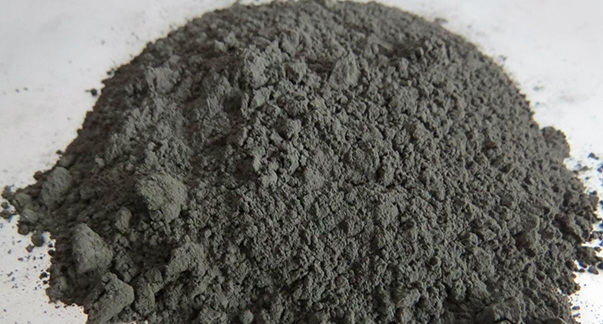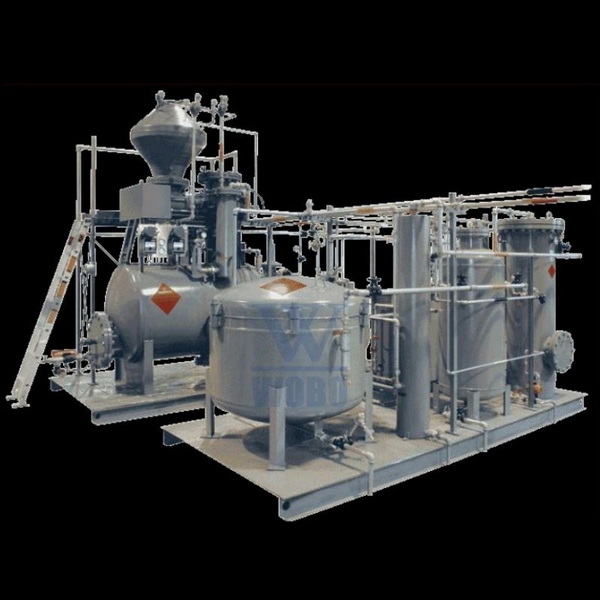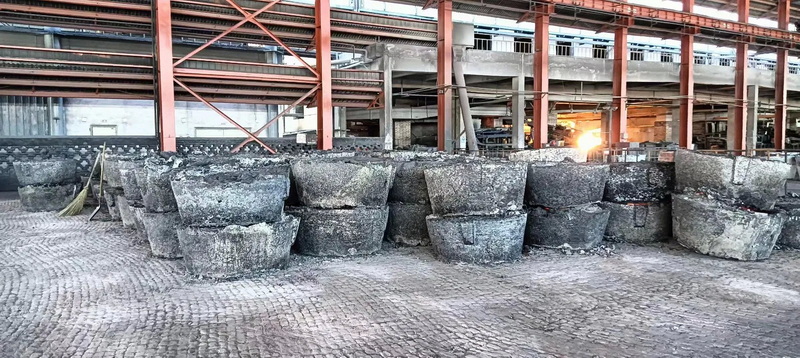Content Menu
● Introduction to Calcium Carbide
>> Chemical Properties and Applications
● Calcium Carbide Production Process
>> Equipment Used in Calcium Carbide Production
>> Challenges in Calcium Carbide Production
● Calcium Carbide Production Plant Setup
>> Raw Material Requirements
>> Plant Layout and Equipment
>> Environmental Considerations
● Applications of Calcium Carbide
● Future Trends in Calcium Carbide Production
>> Advancements in Furnace Technology
>> Sustainable Production Practices
● Economic Impact of Calcium Carbide
● Conclusion
● Frequently Asked Questions
>> 1. What is the primary use of calcium carbide?
>> 2. How is calcium carbide produced industrially?
>> 3. What are the raw materials required for calcium carbide production?
>> 4. What are the environmental considerations in calcium carbide production?
>> 5. What are the future trends in calcium carbide production?
● Citations:
Calcium carbide, with the chemical formula CaC₂, is a crucial compound in various industrial applications, including the production of acetylene gas, desulfurization in steel manufacturing, and as a ripening agent. The production of calcium carbide involves a complex process that requires high temperatures and specific raw materials. In this article, we will delve into the details of calcium carbide production in a plant setting, highlighting the key steps, equipment, and applications.

Introduction to Calcium Carbide
Calcium carbide is an inorganic compound that appears as a white powder or colorless crystals in its pure form. However, industrial-grade calcium carbide often presents as a gray-black or brownish solid due to impurities. It is highly reactive, especially with water, producing acetylene gas and calcium hydroxide, which makes it a vital material in industries such as welding, steel production, and chemical synthesis.
Chemical Properties and Applications
Calcium carbide has a molecular weight of 64.099 g/mol and a density of 2.22 g/cm³. Its melting point is approximately 2160°C, and it boils at about 2300°C. The compound is widely used for producing acetylene, which is essential in welding and cutting processes. Additionally, calcium carbide serves as a desulfurizer in the steel industry, improving steel quality by removing sulfur impurities.
Calcium Carbide Production Process
The production of calcium carbide involves several key steps:
1. Raw Material Preparation: The primary raw materials are calcium oxide (lime) and carbon, typically in the form of coke or anthracite. These materials must be crushed and mixed in a specific ratio, usually 1 part lime to 3 parts carbon.
2. Heating in an Electric Arc Furnace: The mixture is then heated in an electric arc furnace at temperatures ranging from 2000°C to 2500°C. This high temperature is necessary to initiate the reaction between calcium oxide and carbon.
3. Reaction: The reaction between CaO and C produces calcium carbide (CaC₂) and carbon monoxide (CO). The chemical equation for this process is:
CaO+3C→CaC2+CO
This reaction is endothermic, requiring significant energy input to drive off the carbon monoxide.
4. Cooling and Solidification: After the reaction is complete, the furnace is cooled, allowing the calcium carbide to solidify.
5. Crushing and Packaging: The solid calcium carbide is then crushed into smaller pieces and packaged for distribution.
Equipment Used in Calcium Carbide Production
- Electric Arc Furnace: This is the primary equipment used for calcium carbide production. It provides the high temperatures necessary for the reaction between lime and carbon.
- Soderberg Electrodes: These are used in closed furnaces to improve efficiency and reduce energy consumption.
- Coke Dryer: Used to remove moisture from coke before it is mixed with lime.
- Lime Kiln: Converts limestone into lime by calcination.
Challenges in Calcium Carbide Production
One of the significant challenges in traditional calcium carbide production is the need for raw materials to be in a specific particle size range to ensure proper porosity and electrical conductivity in the furnace. This can limit the availability of raw materials and increase costs.
To address these challenges, new methods are being developed that allow the use of powdered lime and carbon, which can be more cost-effective and flexible in terms of raw material selection.
Calcium Carbide Production Plant Setup
Setting up a calcium carbide production plant requires careful consideration of several factors, including raw material sourcing, equipment selection, and environmental impact mitigation.
Raw Material Requirements
- Limestone/CaO: The primary source of calcium oxide.
- Coke/Anthracite: Provides the carbon necessary for the reaction.
- Electricity: High energy input is required for the electric arc furnace.
Plant Layout and Equipment
A typical calcium carbide production plant includes:
- Raw Material Storage: Facilities for storing limestone, coke, and other materials.
- Crushing and Mixing Area: Where raw materials are prepared for the furnace.
- Electric Arc Furnace: The heart of the production process.
- Cooling and Solidification Area: For handling the molten calcium carbide.
- Packaging and Storage: Facilities for final product handling.
Environmental Considerations
The production of calcium carbide generates significant amounts of dust and carbon monoxide. Implementing dust collection systems and ensuring proper ventilation are crucial for minimizing environmental impact.

Applications of Calcium Carbide
Calcium carbide has a wide range of applications:
- Acetylene Production: Reacts with water to produce acetylene gas, used in welding and cutting.
- Steel Industry: Acts as a desulfurizer to improve steel quality.
- Agricultural Use: Can be used as a soil amendment.
- Carbide Lamps: Used historically for lighting in vehicles and bicycles.
Future Trends in Calcium Carbide Production
As the demand for acetylene-based chemicals and PVC continues to grow, particularly in regions like China, the calcium carbide industry is evolving towards more efficient and environmentally friendly production methods. Innovations in furnace technology and raw material processing are expected to play a significant role in this evolution.
Advancements in Furnace Technology
Recent advancements in electric arc furnace design have improved efficiency and reduced energy consumption. For example, the use of Soderberg electrodes in closed furnaces allows for better control over the reaction conditions, leading to higher yields and lower emissions.
Sustainable Production Practices
Efforts are being made to adopt more sustainable practices in calcium carbide production, such as using renewable energy sources and implementing recycling programs for by-products. These initiatives aim to reduce the environmental footprint of the industry while maintaining production levels.
Economic Impact of Calcium Carbide
The economic impact of calcium carbide is significant, particularly in regions with large steel and chemical industries. The compound's role in producing acetylene and improving steel quality makes it a vital component of these sectors. Additionally, the demand for calcium carbide in emerging economies is driving investment in new production facilities and technological innovations.
Conclusion
Calcium carbide production is a complex process that involves high temperatures and specific raw materials. The compound's versatility in various industrial applications makes it a crucial component of modern manufacturing. As technology advances and environmental concerns grow, the calcium carbide industry is poised to adopt more sustainable practices while meeting increasing global demand.

Frequently Asked Questions
1. What is the primary use of calcium carbide?
- Calcium carbide is primarily used for producing acetylene gas, which is essential in welding and cutting processes. It also serves as a desulfurizer in the steel industry.
2. How is calcium carbide produced industrially?
- Calcium carbide is produced in an electric arc furnace by heating a mixture of lime and coke at approximately 2,200°C.
3. What are the raw materials required for calcium carbide production?
- The primary raw materials are calcium oxide (lime) and carbon, typically in the form of coke or anthracite.
4. What are the environmental considerations in calcium carbide production?
- The production process generates dust and carbon monoxide, necessitating dust collection systems and proper ventilation to minimize environmental impact.
5. What are the future trends in calcium carbide production?
- The industry is moving towards more efficient and environmentally friendly production methods, driven by technological innovations and increasing demand for acetylene-based chemicals.
Citations:
[1] https://patents.google.com/patent/US4594236A/en
[2] https://sathee.prutor.ai/article/chemistry/chemistry-calcium-carbide/
[3] https://www3.epa.gov/ttnchie1/ap42/ch11/final/c11s04.pdf
[4] https://www.tjtywh.com/what-is-calcium-carbide-and-its-applications.html
[5] https://www.niir.org/blog/wp-content/uploads/2021/11/Manufacturing-Business-of-Calcium-Carbide-Calcium-Acetylide.-Investment-Opportunities-in-Chemical-Industry.-1.pdf
[6] https://www.tjtywh.com/a-step-by-step-guide-to-making-calcium-carbide-at-home.html
[7] https://en.wikipedia.org/wiki/Calcium_carbide
[8] https://www.vedantu.com/chemistry/calcium-carbide
[9] https://byjus.com/chemistry/calcium-carbide/
[10] https://rexarc.com/blog/calcium-carbide-for-acetylene-production/
[11] https://www.ascconline.com/img/services/project_report/Calcium_Carbide_Project_Report_Sample.pdf
[12] https://www.youtube.com/watch?v=olAlOs0Er00
[13] https://enterclimate.com/calcium-carbide-manufacturing-unit-setup
[14] https://www.acs.org/education/whatischemistry/landmarks/calciumcarbideacetylene.html
[15] https://shendaelectric.en.made-in-china.com/product/OXsmTydlMRkc/China-Calcium-Carbide-Electric-Arc-Furnace.html
[16] https://sanruifurnace.en.made-in-china.com/product/uxlpqKHbXXUe/China-Electric-Arc-Furnace-10-Ton-Calcium-Carbide-Electric-Arc-Furnace-Price.html
[17] https://www.shutterstock.com/search/calcium-carbide
[18] https://www.shutterstock.com/search/electric-arc-furnace
[19] https://stock.adobe.com/search?k=%22calcium+carbide%22
[20] https://www.alamy.com/stock-photo/carbide-furnace.html?page=2
[21] https://www.istockphoto.com/photos/calcium-carbide
[22] https://www.alibaba.com/product-detail/Electric-arc-furnace-10-ton-100ton_1600227061236.html
[23] https://www.alibaba.com/product-detail/Calcium--Carbide--Electric--Arc--Furnace--Arc_11000015316389.html
[24] https://www.shutterstock.com/search/calcium-carbure
[25] https://www.alamy.com/stock-photo/carbide-of-calcium.html?page=3
[26] https://testbook.com/chemistry/calcium-carbide
[27] https://testbook.com/question-answer/calcium-carbide-on-treatment-with-water-yields--62fa9dbaec4d926dcd988b5c
[28] https://testbook.com/question-answer/calcium-carbide-is-used-for-artificial-ripening-of--60dda8789411b0e42f8cf1e5
[29] https://byjus.com/question-answer/calcium-carbide-is-also-used-for-ripening-fruit-artificially-in-some-countries-calcium-carbide-reacts/
[30] https://testbook.com/question-answer/in-calcium-carbide-method-the-produced-gas-is-___--6695edf9c8f531b4017da9e8
[31] https://www.cargohandbook.com/Calcium_Carbide
[32] https://www.doubtnut.com/qna/645885768
[33] https://www.alzchem.com/en/company/news/calcium-carbide-for-acetylene-production/
[34] https://nj.gov/health/eoh/rtkweb/documents/fs/0312.pdf
[35] https://camachem.com/es/blog/post/frequently-asked-question-about-calcium-carbide
[36] https://www.youtube.com/watch?v=BtfSHPBy9Bg
[37] https://rexarc.com/blog/know-how-acetylene-is-produced-in-acetylene-plant/
[38] https://en.wikipedia.org/wiki/Electric_arc_furnace
[39] https://www.alamy.com/stock-photo/calcium-carbide.html
















